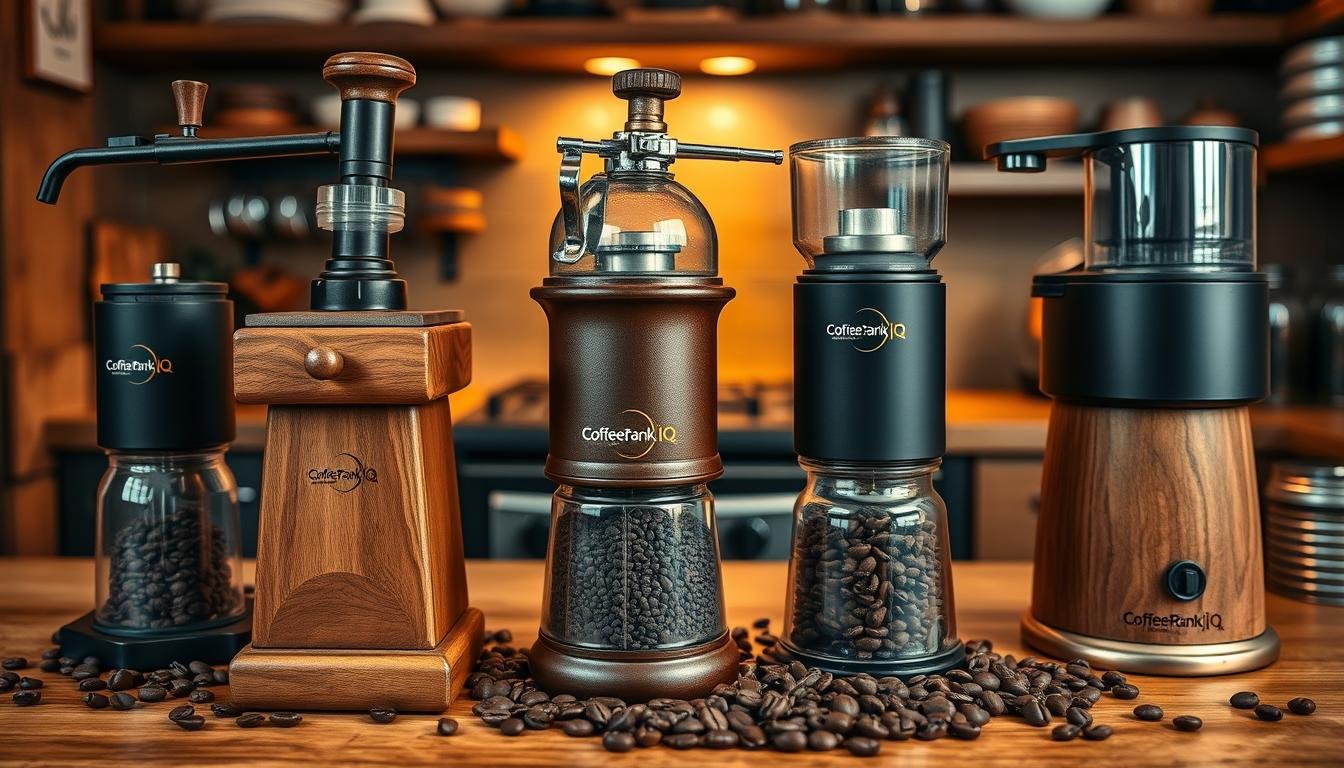“Beginner’s Guide To Using Single Cup Coffee Maker Filters” is an essential read for anyone new to the world of single cup brewing. This comprehensive guide walks you through each step, from selecting the right filter to understanding the importance of grind size and water temperature. You will gain valuable insights into optimizing your coffee maker’s performance to achieve the perfect brew every time. With clear, concise instructions and practical tips, this guide ensures that your experience with single cup coffee makers is both enjoyable and efficient.
Beginner’s Guide To Using Single Cup Coffee Maker Filters
Have you recently acquired a single cup coffee maker and find yourself puzzled by the variety of filters available? Single cup coffee makers can be a boon for brewing a quick, personalized cup of coffee, but the numerous filter options can be a tad overwhelming for newcomers. This guide aims to elucidate all aspects of single cup coffee maker filters, providing you with the knowledge to make the perfect selection.
Understanding Single Cup Coffee Maker Filters
What Are Single Cup Coffee Maker Filters?
Single cup coffee maker filters are specialized devices designed to hold coffee grounds while allowing water to pass through during the brewing process. They play an essential role in determining the flavor and quality of your coffee. They come in a variety of shapes, sizes, and materials, each of which can impact your brewing experience differently.
Why Use a Filter?
Filters are crucial for several reasons:
- Improved Taste: Filters help to trap sediments and oils that could potentially make your coffee taste bitter.
- Consistency: A good filter ensures the water flows evenly, resulting in a consistent brew.
- Health Considerations: Filters can trap harmful substances such as cafestol, which can be detrimental to your health when consumed in large quantities.
Types of Single Cup Coffee Maker Filters
Disposable Filters
Disposable filters are a popular choice for single cup coffee makers due to their convenience. These are typically made of paper and intended for single-use, which means you can easily dispose of them after brewing your coffee.
Pros:
- Convenience: No cleaning required.
- Hygiene: Reduces the chance of bacteria buildup.
Cons:
- Cost: Lifelong usage can be expensive.
- Environmental Impact: Not eco-friendly.
Reusable Filters
Reusable filters, often made from metal or plastic, are designed to be cleaned and reused multiple times. These can also come in the form of permanent mesh filters.
Pros:
- Eco-Friendly: Reduce waste.
- Cost-Effective: One-time purchase cost.
Cons:
- Maintenance: Requires regular cleaning.
- Taste Variation: Metal filters may impart a different taste compared to paper ones.
Choosing the Right Filter
Material Considerations
When selecting a filter, the material it is made from can significantly influence your coffee’s final taste profile.
| Material | Characteristics | Best Suited For |
|---|---|---|
| Paper | Traps more oils and sediments | Cleaner, brighter coffee taste |
| Metal (Stainless Steel) | Allows more oils to pass through | Richer, fuller-bodied coffee |
| Cloth | Provides a middle ground | Balanced flavor profile |
| Plastic | Lightweight and durable | Convenience and ease of use |
Size and Compatibility
Different single cup coffee makers require filters of specific sizes and shapes. Always check the manufacturer’s recommendations to ensure compatibility.
Environmental Considerations
If sustainability is a priority, you might prefer reusable filters over disposable ones. Some reusable filters are even designed to be biodegradable or compostable, offering a middle path.
How to Use Single Cup Coffee Maker Filters
Preparation
Before using your filter, it is crucial to prep it correctly to ensure optimal performance.
-
For Paper Filters:
- Rinse the filter with hot water to remove any paper taste.
-
For Reusable Filters:
- Ensure the filter is clean and free of old coffee residues.
-
For Metal Filters:
- Regularly check for any wear and tear to avoid compromising the brew quality.
Measuring Your Coffee
Accurate measurement of coffee grounds is essential for a consistent taste. Typically, it is recommended to use a standard coffee-to-water ratio of 1:15.
Steps to Measure:
- Spoon: Use a scoop to measure approximately two tablespoons of coffee grounds.
- Scale: For a more precise measurement, use a digital scale.
Brewing Process
- Load the Filter: Place the appropriate filter into the coffee maker.
- Add Coffee Grounds: Pour the measured coffee grounds into the filter.
- Start Brewing: Follow the coffee maker’s instructions to start the brewing process.
- Monitor: Keep an eye on the extraction to ensure the brew time is optimal.
- Serve: Once done, pour the brewed coffee into your cup and enjoy.
Cleaning and Maintenance
Disposable Filters
Disposable filters are low-maintenance due to their single-use nature. Simply discard the filter and rinse the coffee maker parts that come into contact with coffee.
Reusable Filters
Cleaning reusable filters is somewhat more involved but manageable with regular upkeep.
Steps to Clean:
- Initial Rinse: Immediately after use, rinse the filter to remove loose coffee grounds.
- Deep Clean: At least weekly, soak the filter in a mixture of vinegar and water to remove stubborn residues.
- Drying: Always ensure the filter is completely dry before the next use to prevent bacterial growth.
Metal Filters
Metal filters may require a combination of soaking and scrubbing to maintain.
Tips:
- Avoid harsh chemicals: Use natural cleansers like vinegar or baking soda.
- Inspect Regularly: Regularly check for any signs of wear or clogging.
Troubleshooting Common Issues
Bitter Coffee
Bitter coffee can often be attributed to over-extraction or the type of filter used. Adjust the grind size or try using a paper filter to see if there is an improvement.
Weak Coffee
Weak coffee may result from under-extraction or incorrect coffee-to-water ratios. Consider using finer grounds or adding more coffee to your filter.
Clogged Filters
Regular cleaning can help prevent clogging. If you experience a clogged filter, thoroughly rinse it and ensure no coffee residues are obstructing the flow.
Tips for Optimal Brewing
Water Quality
Use filtered water to avoid any off-tastes caused by impurities in tap water.
Temperature Control
Ideal brewing temperature ranges between 195°F-205°F. Most single cup makers are designed to heat water to this range automatically.
Freshness of Coffee Grounds
Always use fresh coffee grounds to ensure the best flavor. Store coffee in an airtight container to maintain its freshness for a longer period.
Frequently Asked Questions
How Often Should I Change My Reusable Filter?
Typically, reusable filters can last for several months or even years with proper care. However, you should replace them if you notice any damage or prolonged clogging.
Are Reusable Filters Safe to Use?
Yes, reusable filters are safe as long as they are cleaned regularly and show no physical damage. Stainless steel and BPA-free plastic filters are recommended.
Can I Use Any Type of Coffee Grounds?
While you can technically use any type of coffee grounds, certain grind sizes work better with specific filters. For instance, a medium grind is generally most effective for single cup coffee makers.
Conclusion
Navigating the world of single cup coffee maker filters can initially seem daunting, but armed with the right knowledge, it’s a straightforward process. Whether you opt for disposable or reusable filters, understanding their characteristics, advantages, and maintenance requirements will ensure you brew the perfect cup every time. So, take the time to experiment with different filters and find the one that best suits your taste and lifestyle. Happy brewing!



